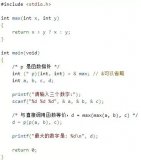本文分享給大家 12 種 Numpy 和 Pandas 函數,這些高效的函數會令數據分析更為容易、便捷。最后,讀者也可以在 GitHub 項目中找到本文所用代碼的 Jupyter Notebook。
項目地址:https://github.com/kunaldhariwal/12-Amazing-Pandas-NumPy-Functions
Numpy 的 6 種高效函數
首先從 Numpy 開始。Numpy 是用于科學計算的 Python 語言擴展包,通常包含強大的 N 維數組對象、復雜函數、用于整合 C/C++和 Fortran 代碼的工具以及有用的線性代數、傅里葉變換和隨機數生成能力。
除了上面這些明顯的用途,Numpy 還可以用作通用數據的高效多維容器(container),定義任何數據類型。這使得 Numpy 能夠實現自身與各種數據庫的無縫、快速集成。
接下來一一解析 6 種 Numpy 函數。
1、argpartition()
借助于 argpartition(),Numpy 可以找出 N 個最大數值的索引,也會將找到的這些索引輸出。然后我們根據需要對數值進行排序。
x = np.array([12, 10, 12, 0, 6, 8, 9, 1, 16, 4, 6, 0])index_val = np.argpartition(x, -4)[-4:]
index_val
array([1, 8, 2, 0], dtype=int64)np.sort(x[index_val])
array([10, 12, 12, 16])
2、allclose()
allclose() 用于匹配兩個數組,并得到布爾值表示的輸出。如果在一個公差范圍內(within a tolerance)兩個數組不等同,則 allclose() 返回 False。該函數對于檢查兩個數組是否相似非常有用。
array1 = np.array([0.12,0.17,0.24,0.29])
array2 = np.array([0.13,0.19,0.26,0.31])# with a tolerance of 0.1, it should return False:
np.allclose(array1,array2,0.1)
False# with a tolerance of 0.2, it should return True:
np.allclose(array1,array2,0.2)
True
3、clip()
Clip() 使得一個數組中的數值保持在一個區間內。有時,我們需要保證數值在上下限范圍內。為此,我們可以借助 Numpy 的 clip() 函數實現該目的。給定一個區間,則區間外的數值被剪切至區間上下限(interval edge)。
x = np.array([3, 17, 14, 23, 2, 2, 6, 8, 1, 2, 16, 0])np.clip(x,2,5)
array([3, 5, 5, 5, 2, 2, 5, 5, 2, 2, 5, 2])
4、extract()
顧名思義,extract() 是在特定條件下從一個數組中提取特定元素。借助于 extract(),我們還可以使用 and 和 or 等條件。
# Random integers
array = np.random.randint(20, size=12)
array
array([ 0, 1, 8, 19, 16, 18, 10, 11, 2, 13, 14, 3])# Divide by 2 and check if remainder is 1
cond = np.mod(array, 2)==1
cond
array([False, True, False, True, False, False, False, True, False, True, False, True])# Use extract to get the values
np.extract(cond, array)
array([ 1, 19, 11, 13, 3])# Apply condition on extract directly
np.extract(((array 《 3) | (array 》 15)), array)
array([ 0, 1, 19, 16, 18, 2])
5、where()
Where() 用于從一個數組中返回滿足特定條件的元素。比如,它會返回滿足特定條件的數值的索引位置。Where() 與 SQL 中使用的 where condition 類似,如以下示例所示:
y = np.array([1,5,6,8,1,7,3,6,9])# Where y is greater than 5, returns index position
np.where(y》5)
array([2, 3, 5, 7, 8], dtype=int64),)# First will replace the values that match the condition, # second will replace the values that does not
np.where(y》5, “Hit”, “Miss”)
array([ Miss , Miss , Hit , Hit , Miss , Hit , Miss , Hit , Hit ],dtype= 《U4 )
6、percentile()
Percentile() 用于計算特定軸方向上數組元素的第 n 個百分位數。
a = np.array([1,5,6,8,1,7,3,6,9])print(“50th Percentile of a, axis = 0 : ”,
np.percentile(a, 50, axis =0))
50th Percentile of a, axis = 0 : 6.0b = np.array([[10, 7, 4], [3, 2, 1]])print(“30th Percentile of b, axis = 0 : ”,
np.percentile(b, 30, axis =0))
30th Percentile of b, axis = 0 : [5.1 3.5 1.9]
這就是 Numpy 擴展包的 6 種高效函數,相信會為你帶來幫助。接下來看一看 Pandas 數據分析庫的 6 種函數。
Pandas的 6 種高效函數
Pandas 也是一個 Python 包,它提供了快速、靈活以及具有顯著表達能力的數據結構,旨在使處理結構化 (表格化、多維、異構) 和時間序列數據變得既簡單又直觀。
Pandas 適用于以下各類數據:
具有異構類型列的表格數據,如 SQL 表或 Excel 表;
有序和無序 (不一定是固定頻率) 的時間序列數據;
帶有行/列標簽的任意矩陣數據(同構類型或者是異構類型);
其他任意形式的統計數據集。事實上,數據根本不需要標記就可以放入 Pandas 結構中。
1、read_csv(nrows=n)
大多數人都會犯的一個錯誤是,在不需要.csv 文件的情況下仍會完整地讀取它。如果一個未知的.csv 文件有 10GB,那么讀取整個.csv 文件將會非常不明智,不僅要占用大量內存,還會花很多時間。我們需要做的只是從.csv 文件中導入幾行,之后根據需要繼續導入。
import io
import requests# I am using this online data set just to make things easier for you guys
url = “https://raw.github.com/vincentarelbundock/Rdatasets/master/csv/datasets/AirPassengers.csv”
s = requests.get(url).content# read only first 10 rows
df = pd.read_csv(io.StringIO(s.decode( utf-8 )),nrows=10 , index_col=0)
2、map()
map( ) 函數根據相應的輸入來映射 Series 的值。用于將一個 Series 中的每個值替換為另一個值,該值可能來自一個函數、也可能來自于一個 dict 或 Series。
# create a dataframe
dframe = pd.DataFrame(np.random.randn(4, 3), columns=list( bde ), index=[ India , USA , China , Russia ])#compute a formatted string from each floating point value in frame
changefn = lambda x: %.2f % x# Make changes element-wise
dframe[ d ].map(changefn)
3、apply()
apply() 允許用戶傳遞函數,并將其應用于 Pandas 序列中的每個值。
# max minus mix lambda fn
fn = lambda x: x.max() - x.min()# Apply this on dframe that we ve just created above
dframe.apply(fn)
4、isin()
lsin () 用于過濾數據幀。Isin () 有助于選擇特定列中具有特定(或多個)值的行。
# Using the dataframe we created for read_csv
filter1 = df[“value”].isin([112])
filter2 = df[“time”].isin([1949.000000])df [filter1 & filter2]
5、copy()
Copy () 函數用于復制 Pandas 對象。當一個數據幀分配給另一個數據幀時,如果對其中一個數據幀進行更改,另一個數據幀的值也將發生更改。為了防止這類問題,可以使用 copy () 函數。
# creating sample series
data = pd.Series([ India , Pakistan , China , Mongolia ])# Assigning issue that we face
data1= data
# Change a value
data1[0]= USA
# Also changes value in old dataframe
data# To prevent that, we use# creating copy of series
new = data.copy()# assigning new values
new[1]= Changed value # printing data print(new)
print(data)
6、select_dtypes()
select_dtypes() 的作用是,基于 dtypes 的列返回數據幀列的一個子集。這個函數的參數可設置為包含所有擁有特定數據類型的列,亦或者設置為排除具有特定數據類型的列。
# We ll use the same dataframe that we used for read_csv
framex = df.select_dtypes(include=“float64”)# Returns only time column
最后,pivot_table( ) 也是 Pandas 中一個非常有用的函數。如果對 pivot_table( ) 在 excel 中的使用有所了解,那么就非常容易上手了。
# Create a sample dataframe
school = pd.DataFrame({ A : [ Jay , Usher , Nicky , Romero , Will ],
B : [ Masters , Graduate , Graduate , Masters , Graduate ],
C : [26, 22, 20, 23, 24]})# Lets create a pivot table to segregate students based on age and course
table = pd.pivot_table(school, values = A , index =[ B , C ],
columns =[ B ], aggfunc = np.sum, fill_value=“Not Available”)
table
原文鏈接:https://towardsdatascience.com/12-amazing-pandas-numpy-functions-22e5671a45b8
編輯:jq
-
SQL
+關注
關注
1文章
773瀏覽量
44217 -
函數
+關注
關注
3文章
4345瀏覽量
62877 -
代碼
+關注
關注
30文章
4823瀏覽量
68900
原文標題:12種Numpy&Pandas高效技巧
文章出處:【微信號:magedu-Linux,微信公眾號:馬哥Linux運維】歡迎添加關注!文章轉載請注明出處。
發布評論請先 登錄
相關推薦
RAPIDS cuDF將pandas提速近150倍

如何優化SUMIF函數的效率
SUMIF函數與SUMIFS函數的區別
Python常用函數大全
語義分割25種損失函數綜述和展望





 解讀12 種 Numpy 和 Pandas 高效函數技巧
解讀12 種 Numpy 和 Pandas 高效函數技巧












評論